Protected Under
Antiquities Act 1975
31°35'23.8"N 74°18'47.6"E
![]()
On the UNESCO World Heritage Site List
Antiquities Act 1975
Sheesh Mahal was constructed by Emperor Shah Jahan for his wife Mumtaz Mahal
The Best Time to Visit Punjab Province is Year long as it has bearable Cold winters and Hot Summers. However, Summers can get really Hot and precautions are recommended during Daytime visits.

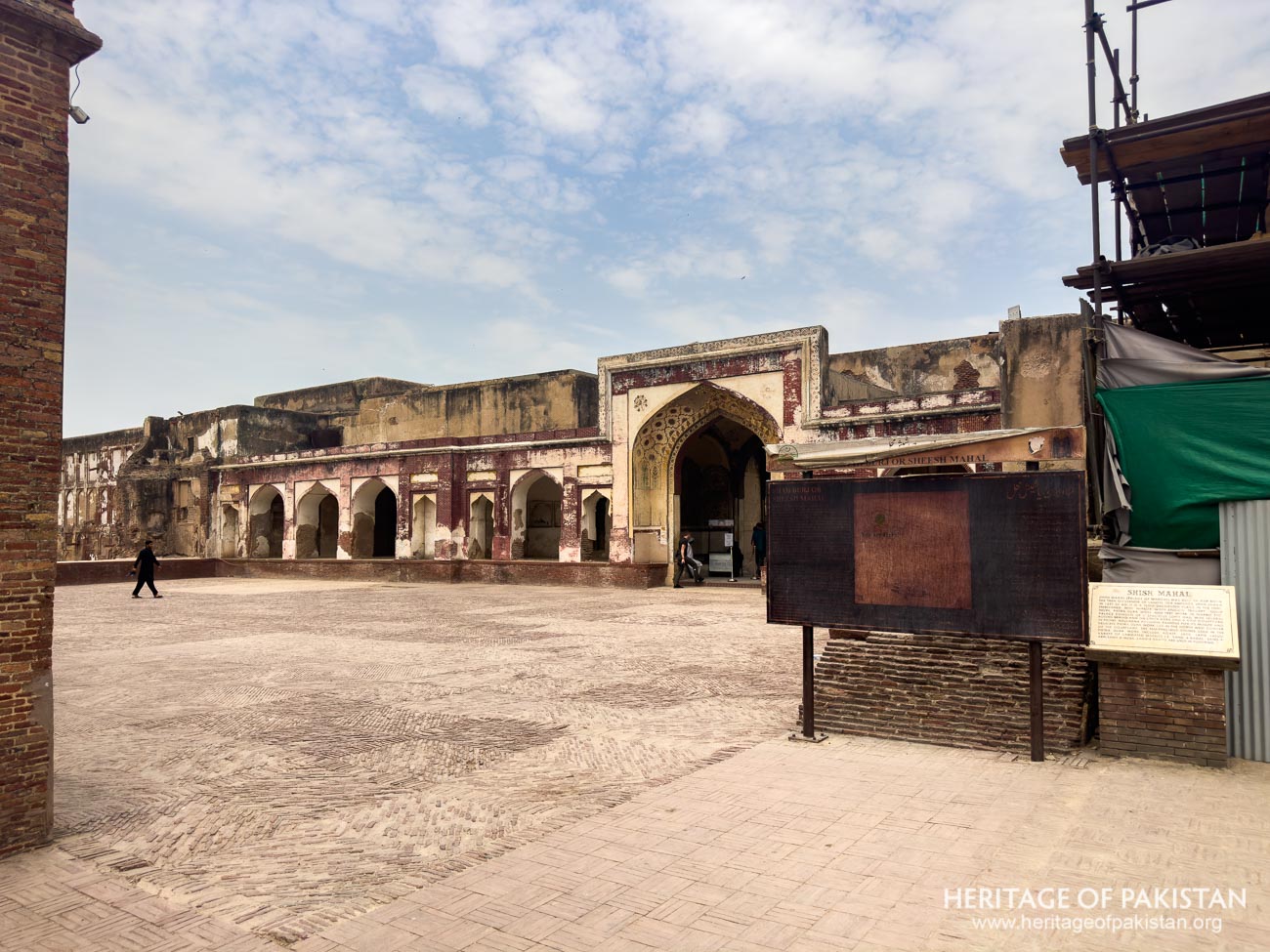
The Sheesh Mahal, or Palace of Mirrors, is among the most ornate and aesthetically distinguished sections of the Lahore Fort. Positioned in the northwestern corner of the fort, this structure exemplifies the architectural refinement of the Mughal era. Constructed between 1631 and 1632 AD, it was commissioned by Emperor Shah Jahan under the supervision of Asif Khan. The palace was intended for Empress Mumtaz Mahal, the same consort for whom the Taj Mahal in Agra was later built. However, Empress Mumtaz Mahal passed away in Aurangabad in 1631 and never resided in the Sheesh Mahal.
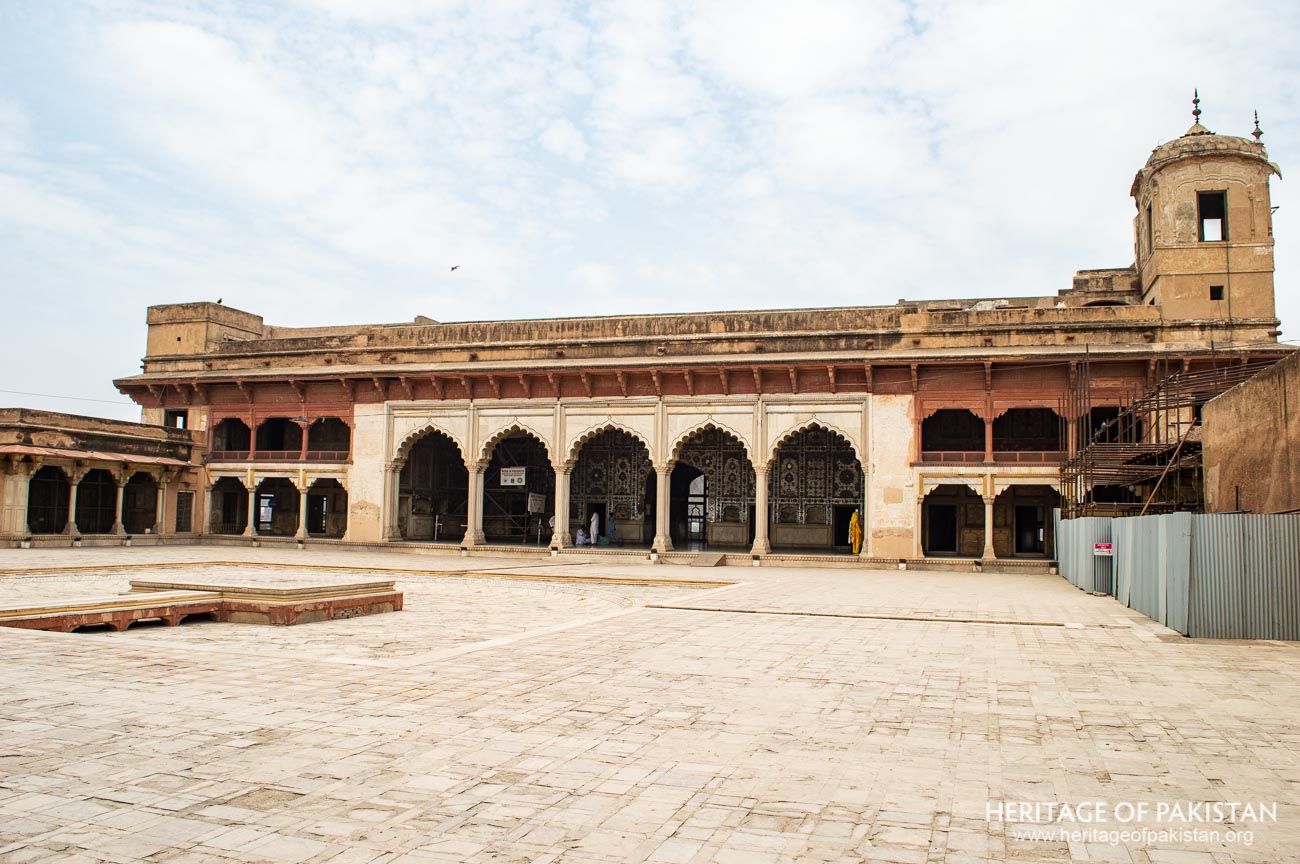
Sheesh Mahal, Lahore Fort, Lahore
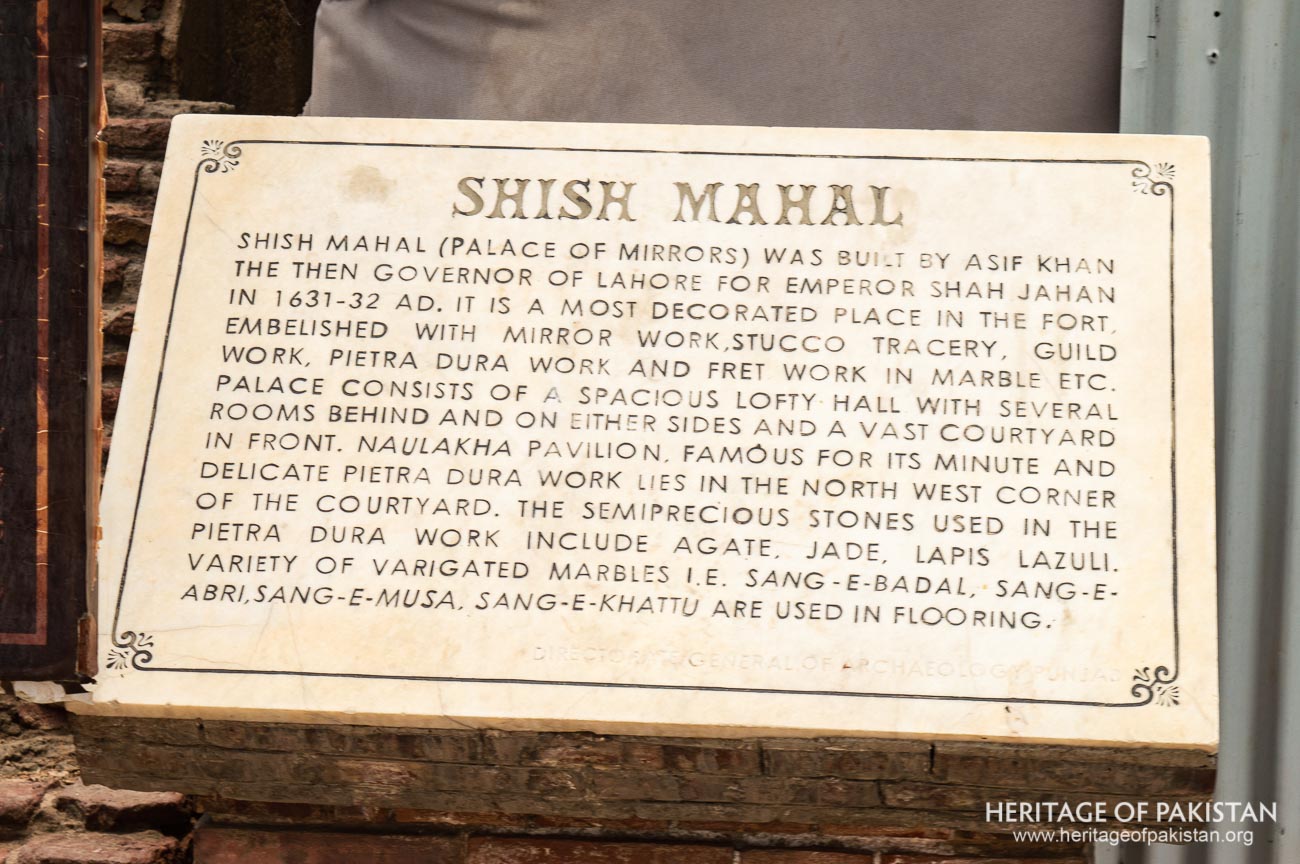
Sheesh Mahal, Lahore Fort
The Sheesh Mahal complex is situated within a square-plan courtyard, featuring a variety of structures and pavilions, with the Sheesh Mahal itself as the focal point. Also referred to as Shah Burj, it originally served as part of the harem section of the fort. Shah Jahan is known to have used the Sheesh Mahal as a personal residence during his visits to Lahore. Architecturally, the interior is distinguished by intricate arabesque patterns made of white cement inlaid with numerous small mirrors of varying colors, giving the hall its iconic reflective brilliance.
Historical accounts, such as those of Muhammad Latif, suggest that the structure was partly the work of Shah Jahan and partly that of his successor, Aurangzeb Alamgir. In the 19th century, the Sheesh Mahal took on new functions under Sikh rule. Maharaja Ranjit Singh used it both as a reception hall and a personal residence. He also added a harem for his consort, Rani Jindan, atop the structure. During his rule, the palace maintained its status as a significant location for political and personal engagements.
Following the British annexation of Punjab, the Sheesh Mahal continued to serve important administrative and ceremonial roles. It was the site where the Treaty of Lahore was ratified by Lord Hardinge in 1846. The Gazetteer of the Lahore District (1893–94) notes that sovereignty of Punjab was formally transferred to British control in this building. Under colonial rule, it was repurposed as the residence of the Garrison Commander and served as a venue for durbars held by Governors and Viceroys.
By the early 20th century, structural concerns emerged. A survey conducted by the Archaeology Department in 1902 found the building in a deteriorating state, with decaying ceiling beams among the most pressing issues. Restoration efforts were carried out in 1905 to address these concerns and stabilize the structure.
Today, the Sheesh Mahal remains a symbol of Mughal craftsmanship and a witness to centuries of political and architectural history within the Lahore Fort.
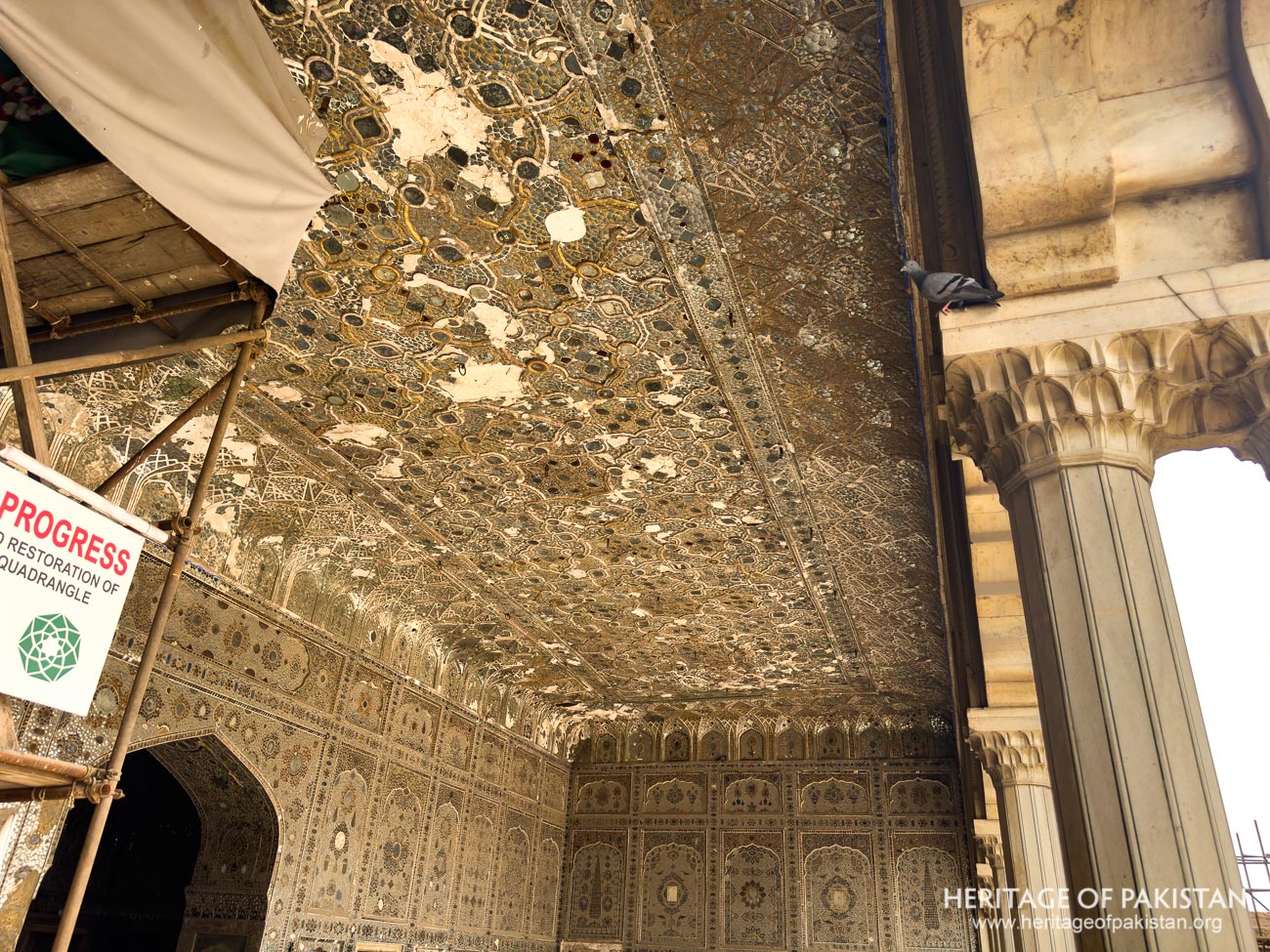
Aina Kari in Sheesh Mahal, Lahore Fort
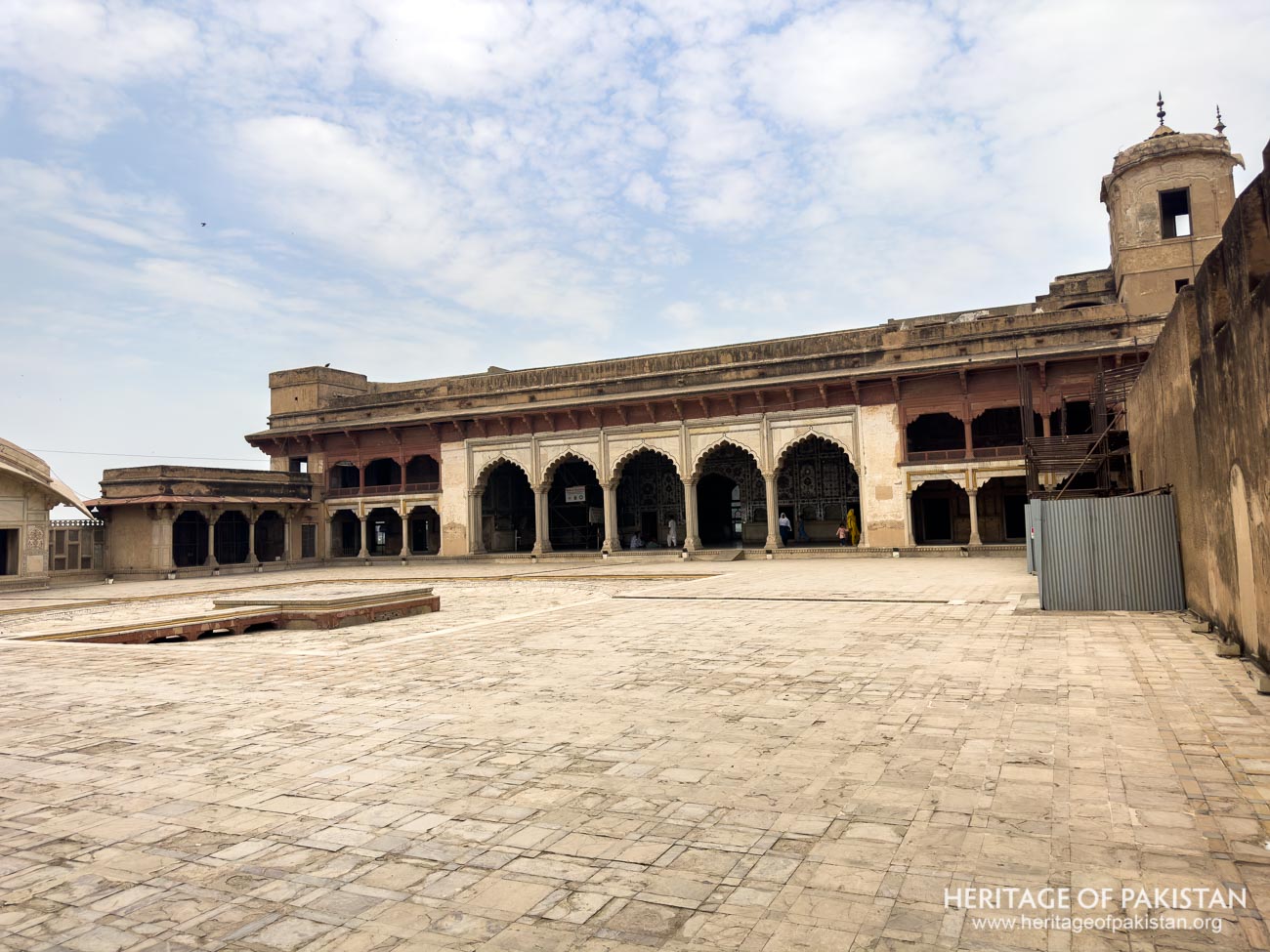
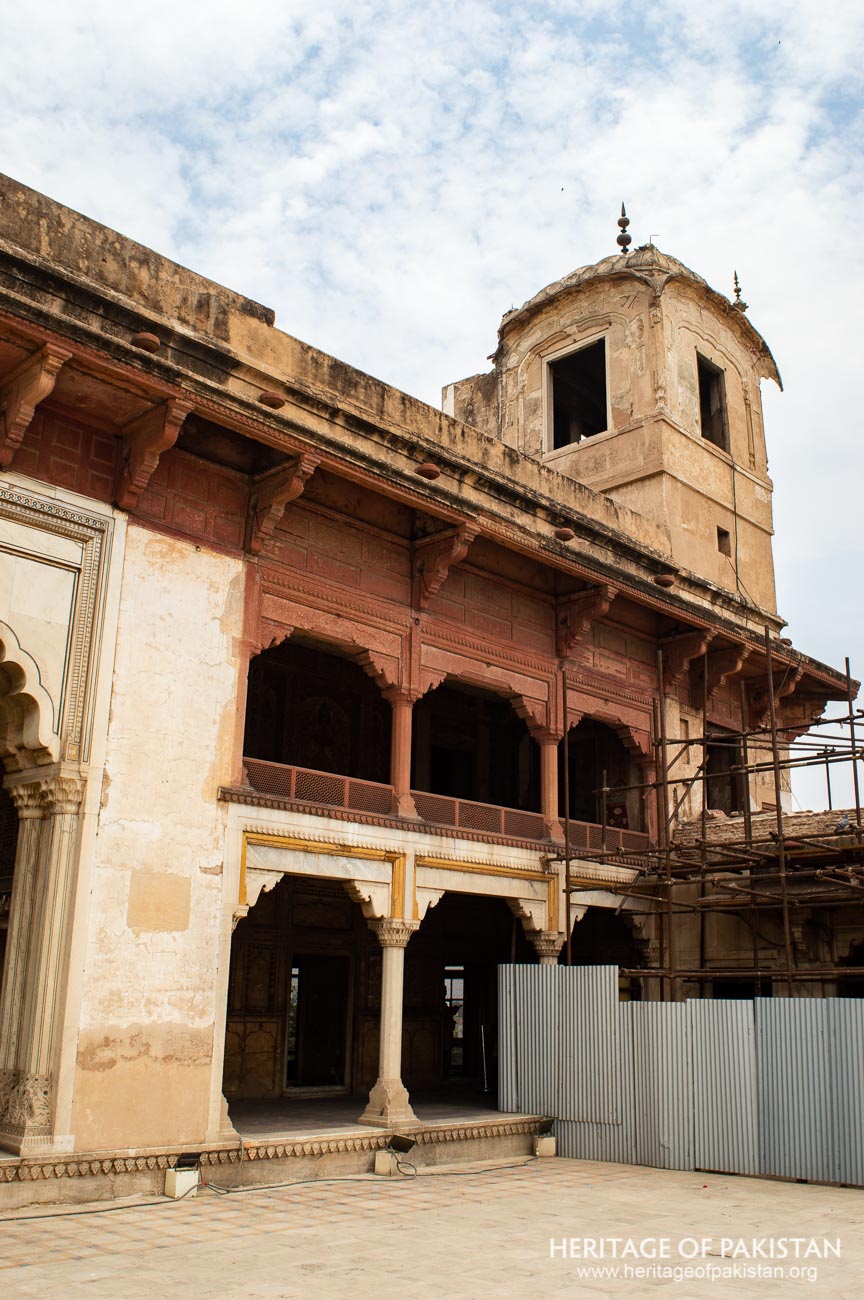
Sheesh Mahal, Lahore Fort
The Sheesh Mahal complex, located within Lahore Fort, is centered around a square-plan courtyard, reflecting the characteristic Char Bagh layout of Mughal garden design. This layout is articulated through four shallow water channels that divide the square into quadrants. At the center of these intersecting channels is a shallow marble tank featuring a raised square platform known as the mahtabi. The entire courtyard, including the mahtabi and water tank, is paved in a variety of richly colored and patterned marbles such as Sang-e-Badal, Sang-e-Abri, Sang-e-Musa, and Sang-e-Khatta.
On the northern side of this courtyard stands the Sheesh Mahal, also known as the Hall of Mirrors. The Sheesh Mahal is a spacious, rectangular hall with its longer side facing the courtyard. It includes adjoining rooms at the back and on either side. The façade that opens onto the courtyard is marked by five large multicusped arches, separated by rows of five double white marble pillars. The spandrels of the arches are adorned with pietra dura, showcasing floral motifs crafted with remarkable precision. The dual marble columns have broad decorative bases inlaid with both pietra dura and marble.
The construction of the Sheesh Mahal incorporated imported stones from across India for the intricate inlay work. Materials such as black marble, turquoise, lapis lazuli, and carnelian were used to achieve the distinctive pietra dura decorations. These embellishments are complemented by a dado of white marble along the lower section of the interior walls. Above the dado, the upper wall sections are subdivided and decorated with a combination of glass mosaic (known as aina kari) laid in gypsum, along with gilded stucco tracery (munabatkari).
The term "Sheesh Mahal" derives from the extensive use of mirror mosaic, or aina kari, that defines the hall’s interiors. The upper portions of the walls and the ceiling have been intricately decorated with convex mirror glass, commonly referred to as Aleppo glass. These mirrored surfaces are combined with stucco tracery and gilded work to produce a richly ornate effect. The glass mosaic work belongs to two distinct periods: the ceiling dates from the Mughal era, while the wall decorations were completed during the Sikh period.
Fresco paintings from the Sikh era are also present within the Sheesh Mahal. These paintings depict scenes rooted in Hindu tradition, including a royal hunting scene and a depiction of two Hindu rajas meeting. Some wall frescoes, uncovered beneath later glasswork, also date back to the Hindu period, providing a layered visual history.
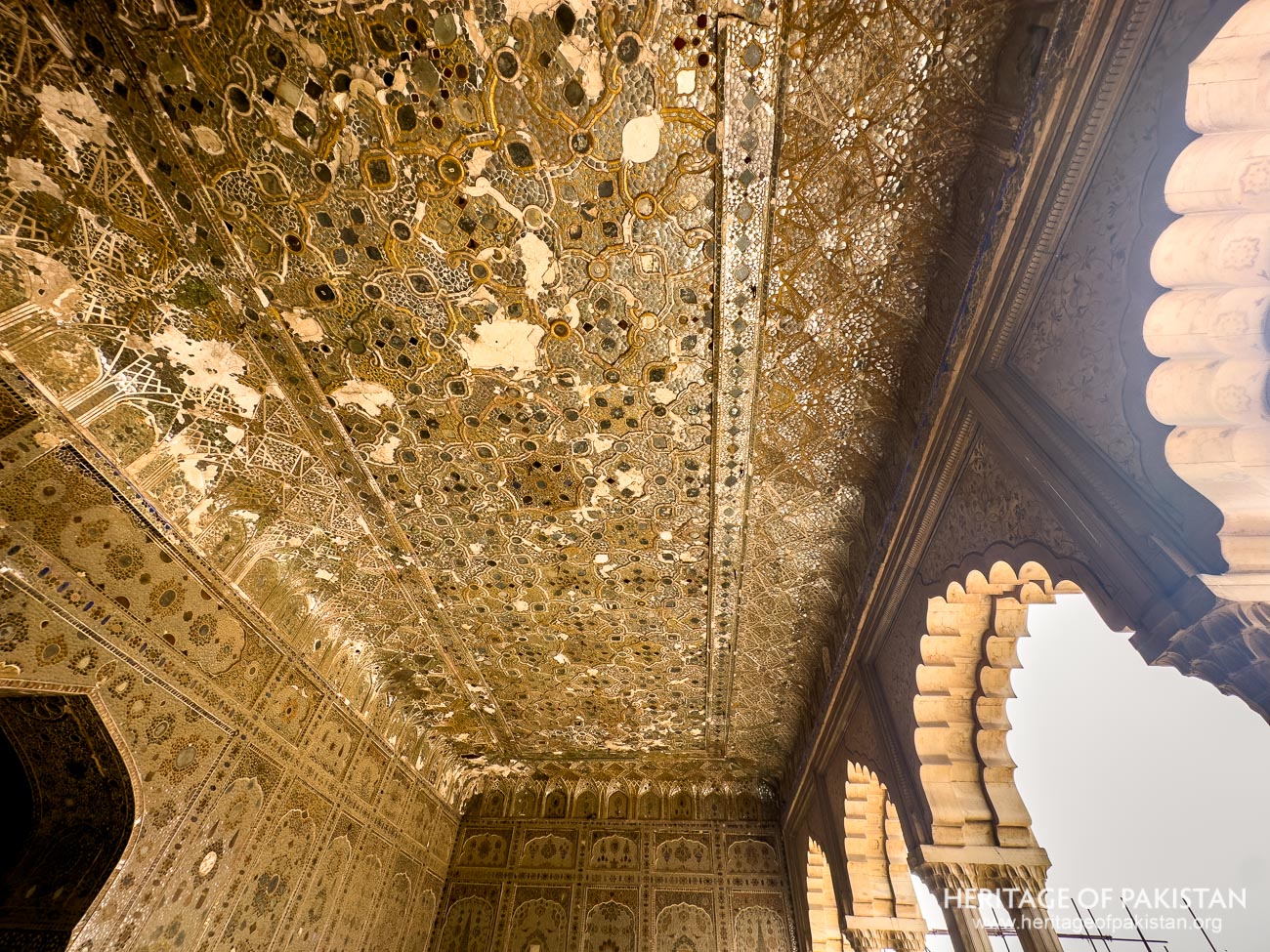
Surrounding the central hall on three sides are nine rooms, decorated in a similar style to the main hall. A prominent feature in the room located at the back of the hall is a finely carved marble jali (screen) in geometric patterns. The roof of the Sheesh Mahal is supported by wooden beams and rafters, many of which were replaced during restoration efforts in the early 20th century and again in the 1980s.
During the Sikh period, additional rooms were constructed over the main hall. Over time, these structures fell into disrepair and posed structural concerns. Many of them were removed during the British era to reduce the load on the Sheesh Mahal. Presently, the only surviving portion is on the eastern side and includes a structure attributed to Nau Nihal Singh.
The decorative elements employed in the Sheesh Mahal include a variety of techniques and materials. These comprise pietra dura, fresco painting, stone carving in relief, plain stone carving, marble work, stone fretwork, wooden fretwork, glass mosaic (aina kari), and mirror and gilded stucco tracery work (munabatkari). Each element contributes to the composite visual and material richness that defines the Sheesh Mahal within the architectural legacy of Lahore Fort.
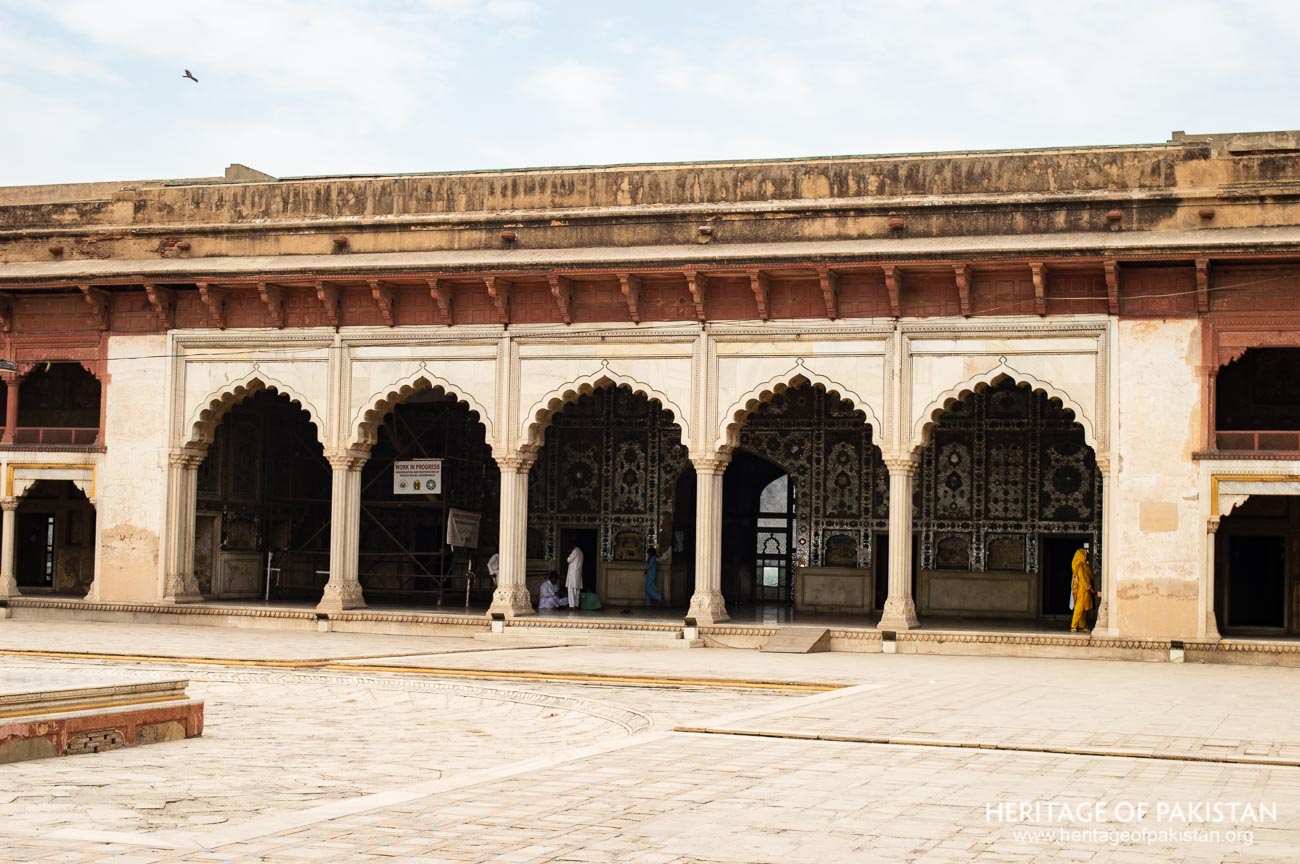
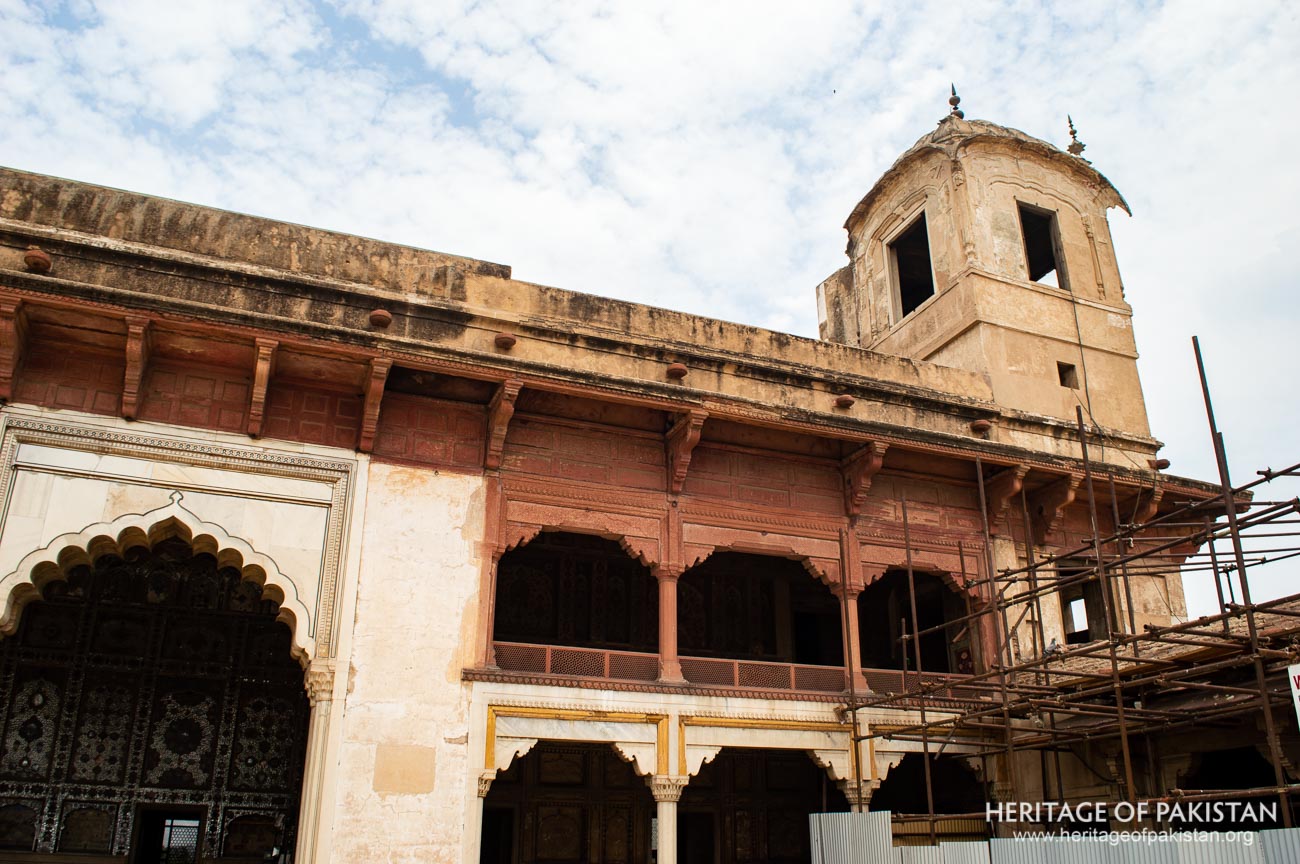
Discover the Sheesh Mahal image gallery and immerse yourself in photographs

All Photographs by Syed Noor Hussain and Sania Azhar.
All Rights Reserved. Photos may be used for Non-Commercial, Educational, Artistic, Research, Non-Profit & Academic purposes.
Commercial uses require licensing agreement.


Add a review